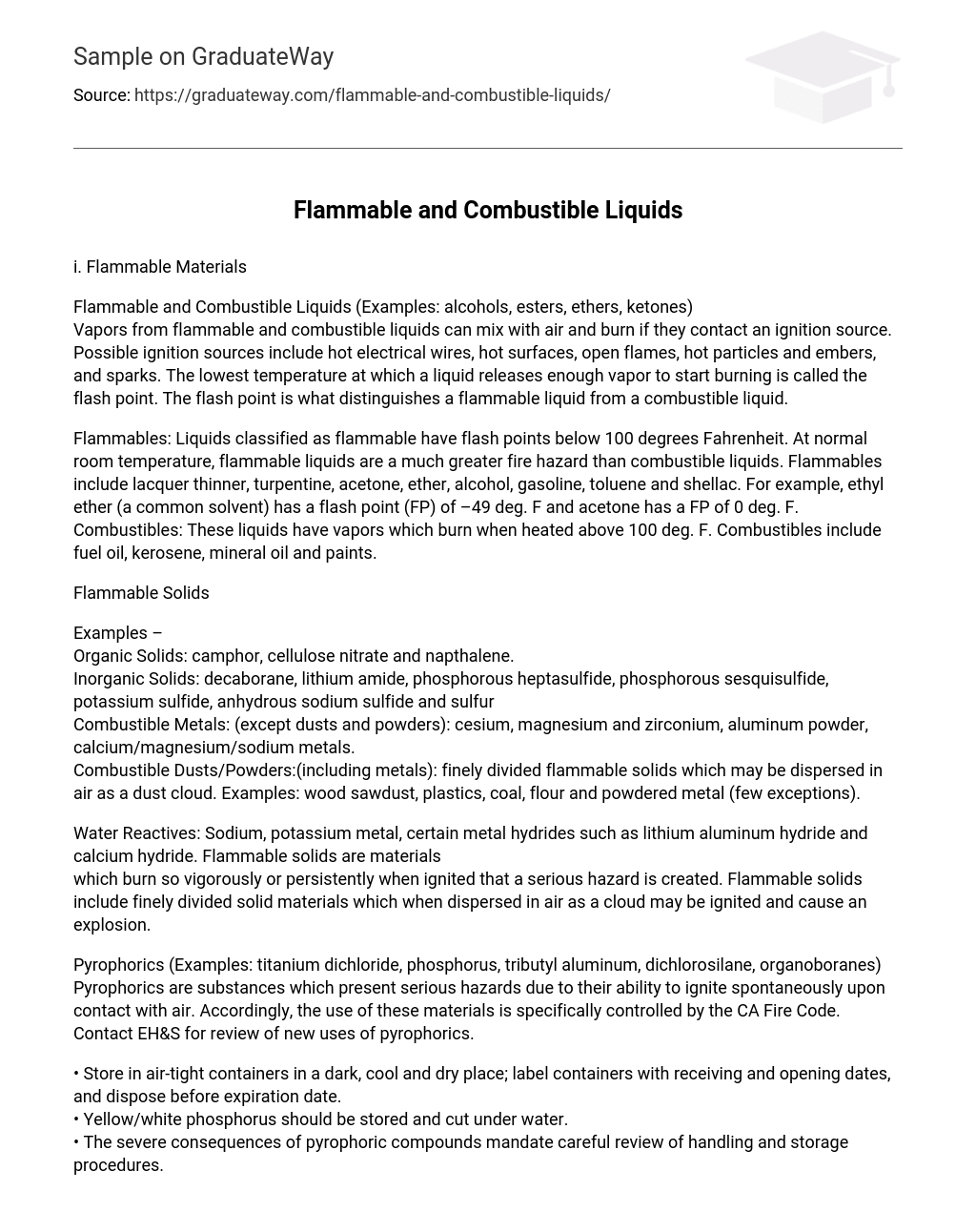i. Flammable Materials
Flammable and Combustible Liquids (Examples: alcohols, esters, ethers, ketones)
Vapors from these liquids can ignite upon contact with an ignition source such as hot electrical wires, surfaces, flames, particles and embers, or sparks. The flash point serves as the determining factor between a flammable liquid and a combustible liquid; it refers to the lowest temperature at which a liquid emits sufficient vapor for combustion to occur.
Flammable liquids are classified as those with flash points below 100 degrees Fahrenheit. They present a greater fire hazard at normal room temperature compared to combustible liquids. Examples of flammables include lacquer thinner, turpentine, acetone, ether, alcohol, gasoline, toluene, and shellac. For instance, ethyl ether, a common solvent, has a flash point of -49 deg. F while acetone has a flash point of 0 deg. F.
On the other hand, combustible liquids are those with vapors that burn when heated above 100 deg F. Examples of combustibles are fuel oil, kerosene, mineral oil, and paints.
Flammable Solids
Examples –
Organic Solids: such as camphor, cellulose nitrate, and napthalene.
Inorganic Solids: including decaborane, lithium amide, phosphorous heptasulfide, phosphorous sesquisulfide, potassium sulfide, anhydrous sodium sulfide, and sulfur.
Combustible Metals (excluding dusts and powders): like cesium, magnesium, and zirconium, as well as aluminum powder and calcium/magnesium/sodium metals.
Combustible Dusts/Powders (including metals): referring to finely divided flammable solids that can be dispersed in the air as a dust cloud. Examples of this include wood sawdust, plastics, coal, flour, and powdered metal (with few exceptions).
Water reactive substances, such as sodium, potassium metal, and certain metal hydrides (like lithium aluminum hydride and calcium hydride), can react strongly with water. Conversely, flammable solids are materials that burn intensely or persistently when ignited, posing a significant danger. This category includes finely divided solid substances that can be ignited and cause an explosion when dispersed in air as a cloud.
Pyrophorics (Examples: titanium dichloride, phosphorus, tributyl aluminum, dichlorosilane, organoboranes)
Pyrophorics are substances that can spontaneously ignite when exposed to air. Because of this, the use of these materials is regulated by the CA Fire Code. Contact EH&S to review any new uses of pyrophorics.
Store in air-tight containers in a dark, cool and dry place; label containers with receiving and opening dates, and dispose before expiration date. Yellow/white phosphorus should be stored and cut under water. The severe consequences of pyrophoric compounds mandate careful review of handling and storage procedures.





